Click on images to enlarge
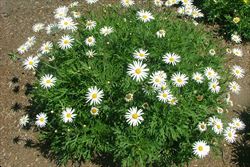
habit (Photo: Sheldon Navie)

habit (Photo: Sheldon Navie)

bright green leaves (Photo: Sheldon Navie)
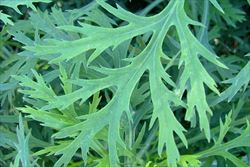
close-up of deeply-divided lower leaves (Photo: Sheldon Navie)
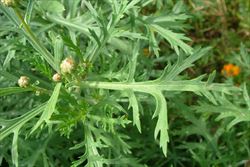
smaller, less-divided, upper leaves and flower buds (Photo: Sheldon Navie)

white flower-heads with yellow centres (Photo: Sheldon Navie)
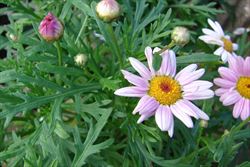
an ornamental cultivar with pink flowers (Photo: Forest and Kim Starr, USGS)
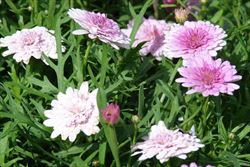
a double-flowered ornamental cultivar (Photo: Forest and Kim Starr, USGS)

another pink-flowered cultivar, which may be of hybrid origin (Photo: Forest and Kim Starr, USGS)
Scientific Name
Argyranthemum frutescens (L.) Sch. Bip. subsp. frutescens
Synonyms
Argyranthemum frutescens (L.) Sch. Bip.Chrysanthemum frutescens L.
Family
Asteraceae (Queensland, New South Wales, the ACT, Victoria, Tasmania, Western Australia and the Northern Territory)Compositae (South Australia)
Common Names
marguerite daisy, marguerite, Paris daisy, Paris marguerite, summer daisy, white marguerite
Origin
Native to the Canary Islands.
Naturalised Distribution
Marguerite daisy (Argyranthemum frutescens subsp. frutescens) is naturalised in south-eastern and southern South Australia and on Norfolk Island. It is also sparingly naturalised in south-eastern Queensland and coastal Victoria.
Also naturalised overseas in south-western USA (i.e. California).
Notes
Marguerite daisy (Argyranthemum frutescens subsp. frutescens) and Teneriffe daisy (Argyranthemum frutescens subsp. foeniculaceum) are both regarded as environmental weeds in South Australia and Western Australia. Cultivars and hybrids of both sub-species are widely cultivated as garden ornamentals and for cut flowers in Australia. Hence, some naturalised populations are intermediate between the two sub-species.
Both of these plants have escaped gardens and become serious weeds in coastal sand dunes in some parts of south-eastern South Australia (i.e. in the higher rainfall zones from the Eyre Peninsula to the Victorian border). They are very invasive in mid-dune areas, particularly where disturbance has occurred, and compete aggressively with less vigorous native flora in these areas through shading and competition for resources. Examples of locations where they are causing problems in this region include Semaphore Park Coastal Reserve and the Henley Beach to Tennyson Coastal Reserve. It also often occurs in sunny positions away from coastal dunes, such as along cliff-tops, on roadsides and on creek banks.
In south-western Western Australia, where Marguerite daisy (Argyranthemum frutescens subsp. frutescens) is less widespread, it is mainly found as a weed of limestone rises and cliffs along the Swan River estuary near Perth.
Plants belonging to one or other of the sub-species of Argyranthemum frutescens have also recently recorded becoming naturalised on sand dunes at Sunshine Beach, south of Noosa, in south-eastern Queensland and are locally naturalised garden escapes on Norfolk Island.

